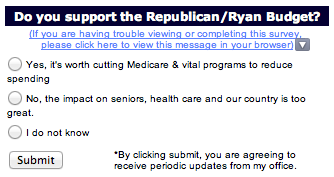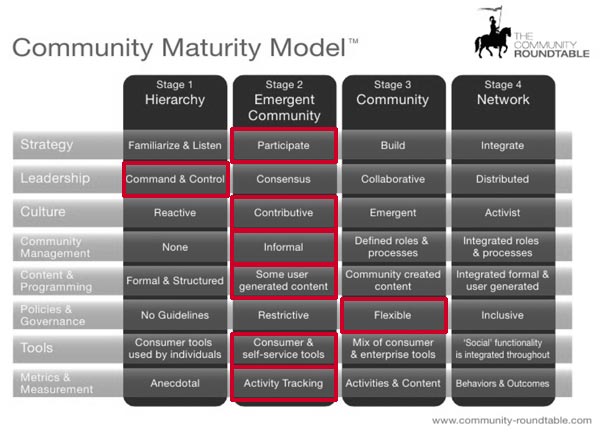You can’t talk about centralization unless you first talk about how things currently work under a decentralized system. So I’ll address that first.
Many traditional universities (most? all?) take a decentralized approach toward their websites, both in terms of creation and maintenance. It’s thought that a decentralized structure where each division, school, college, department and administrative unit effectively controls their space and content on the web is the best way to manage the overall site. Core web teams tend to be small given the size of a university’s online presence so the thinking is “why not shift maintenance of each section of the site to their respective owners?” With a content management system in place, this becomes a matter of simplicity and smart workflow. The core web team creates the initial site based on each unit’s needs and wishes, the site is developed within the CMS, each unit gets trained on how to make updates through the CMS, and then the web team is freed up to go through the same process for the next unit on campus. Conventional wisdom would say this is a rational and reasoned approach, right?
Maybe, but I think the opposite approach — centralization — reaps greater rewards. I’m not against decentralization completely, however. There’s a place and time for it, but to revolve your web efforts around the promises of decentralization will only lead to trouble. There is a happy medium. I’ll cover the benefits to centralization in a moment, but first, here’s a list of issues decentralization wittingly and unwittingly creates:
- Inconsistent experience: With so many different units within the organization, the umbrella website amounts to a consortium of marginally related sub-sites. Each unit independently decides what their needs and wants are and isn’t required to consider other units or the overall experience of the umbrella site.
- Little focus: When a site communicates to a diverse range of audience needs within the same space, it becomes schizophrenic at best, confusing and frustrating at worst. Should information that satisfies one need sit next to information for a totally different need? Separation along people’s jobs-to-be-done could clarify an organization’s message and offer a better overall visitor experience.
- Poor navigation, Part I: Since every unit gets a semi or completely custom made site, consistency of navigation isn’t ensured. Decentralization allows even similar units to offer completely different sets of links even though their audiences’ goals are relatively homogenous. Take a centralized view of audience needs, build a navigation system that speaks to it (and do it only once) and then roll it out to the necessary sites.
- Poor navigation, Part II: The kind of navigational inconsistency above can be remedied relatively easily. What’s harder for the organization is to break away from the idea that navigation should mimic its org chart. Our research has found that students largely don’t know and don’t care that psychology is to be found via the Psychology Department’s site which is itself found via the Arts, Humanities & Social Sciences site. Furthermore, why would we expect them to know the difference between the Psychology Department and the Professional School of Psychology? People think in terms of subject areas, so let’s use a navigational scheme that works with that in mind.
- Disjointed marketing efforts: In effect, a decentralized world creates barriers between internal groups. Since units are largely independent from one another, it’s difficult to see, let alone create, symbiotic relationships. The web offers an alternative where all internal groups can cross promote events, programs, people, research, etc. to maximize the impact of communications. Some level of centralization is needed, however.
- Reactionary processes: If the web team is utilized as a simple vendor who delivers websites for each unit of the larger organization, then the team’s expertise is never fully brought to bear on the broader, umbrella site. Centralization allows a web team to proactively make the site better for all since it’s the only group that’s cognizant of the overall experience.
- No accountability: A decentralized structure spreads accountability of the site’s overall success or failure among a large number of people- so many that the site is effectively unaccountable to anyone or any group. Global decisions or mandates that would introduce economies of scale (as outlined in this very list) are impossible to enact in this climate. Centralization places control and responsibility in the hands of a few. It’s not a power grab, it’s efficiency (see the next point). Accountability creates the motivation to continually create high quality work.
- Inefficient use of resources: Content might be needed in several places on the site. In a decentralized world, that content is likely duplicated in the system as people in different units post the information to their independent sites. Duplicated content = duplicated efforts to maintain = inefficient use of people’s time.
- Slow turnaround time: To create and maintain independent sites causes longer timelines than necessary compared to a centralized world where there is only a single visitor experience to manage. Build it once and then reuse. If you make a change, it’s globally deployed.
- Unsustainable, Part I: As internal groups begin to harness the web’s power beyond static pages, the web team becomes ever more strained to keep up with individual, unit level requests. Centralized efforts allow the web team to prioritize requests and projects based on institutional goals and customer input. The most important projects with the greatest overall impact get the attention they deserve, while less important projects are accomplished as time allows, if at all.
- Unsustainable, Part II: Another aspect to consider are the ongoing costs of maintenance. As sites grow, so too does the effort to keep them up-to-date. The big advantage to decentralization revolves around just this problem — allowing the masses to create and maintain sites after the web team gets it launched. But it’s not without pitfalls in terms of ensuring consistency of content, keeping links from breaking, ensuring new content is created often enough and so on. Are the resources in place to realistically accomplish this?
- Decades of expertise go untapped: The web team, in aggregate, probably has decades of web experience under its belt. Decentralization empowers relatively unskilled web workers to affect the site’s overall visitor experience in potentially negative ways. While it makes sense to decentralize some aspects of a site’s maintenance, why not tap the breadth and depth of the team’s skills and knowledge for major decisions?
Next, I’ll discuss the advantages of centralization. But before I get into it, let me provide context to the discussion.
I have no issue whatsoever with decentralization in terms of content. What I do have an issue with is decentralizing the management of other aspects of the web effort — strategy, IA, design and code. Decentralizing those aspects result in the pitfalls I outlined above. Now there’s always an exception to the rule, but those should be few and far between and that mantra holds true in this case.
In a nutshell, centralizing a site’s management should manifest itself in the opposite ways already outlined. Here’s the quick rundown:
- Greater consistency in design, navigation, functionality, overall experience
- Better focus and clarity in communicating the organization’s messages and goals
- A more symbiotic effort toward marketing the organization to a diverse set of audiences
- A systematic, proactive approach to improving the visitor experience
- Single source accountability for many of the site’s performance metrics and marketing goals
- Greater efficient use of time, effort and resources
- Faster project turnaround time
- Generally, a more sustainable approach
- A happier web team/better morale
However, all that said, centralization does raise issues. Most prominent is the fact that it’s a huge break from the past. The university has long given individual units large latitude in terms of how to run their groups. So much so, that the bigger units don’t even bother with the web team. Instead, they hire outside agencies to knock out whatever it is they need to accomplish. That’s just decentralization by another name though. Our biggest hurdle is the perception that centralizing the site will mean an inability to uniquely market each unit. The argument will go something like: the anthropology department will look like the political science department which will look like the music department and so on down the line.
That’s where the decentralized approach to content comes back into the picture. Content is the best, most efficient way to make your pitch. Yes, design, layout, colors, etc. influence decisions, but (and this is coming from a designer) it matters less that photos are floated left versus right compared to what those photos depict. It matters less that copy is Helvetica rather than Georgia than what the copy says. The ability to determine content is the ability to market.
What centralization ultimately allows is efficient, planned out efforts to roll out improvements and functionality in a consistent, controlled and timely manner based on visitor and university needs. The organization and visitors benefit while the web team stays sane.
 I received this
I received this 